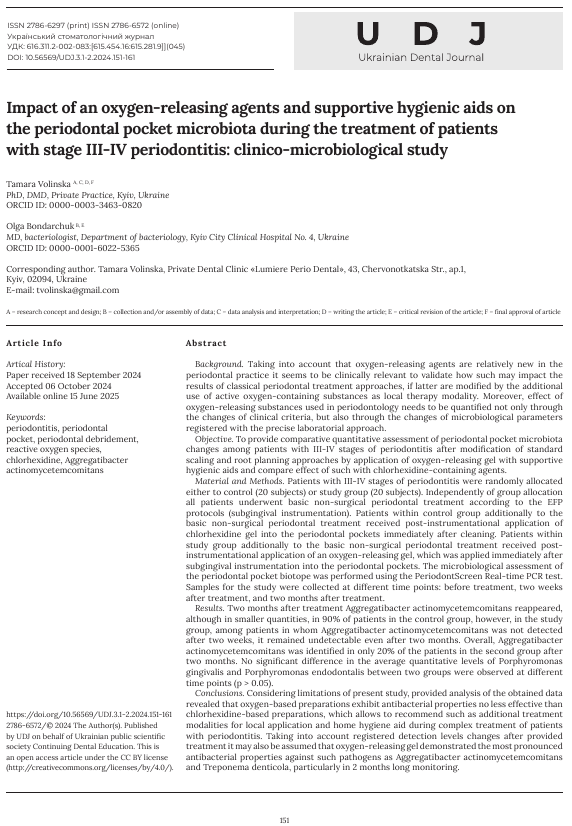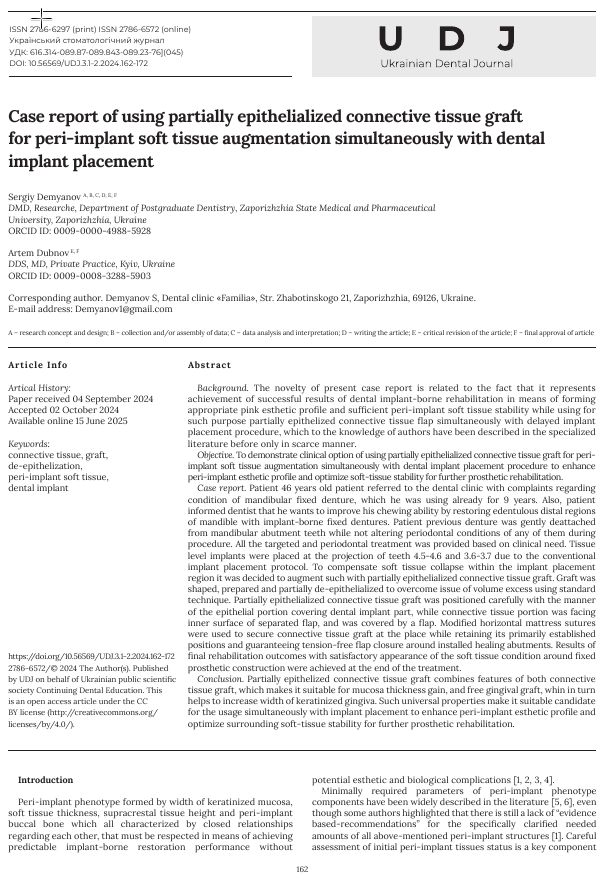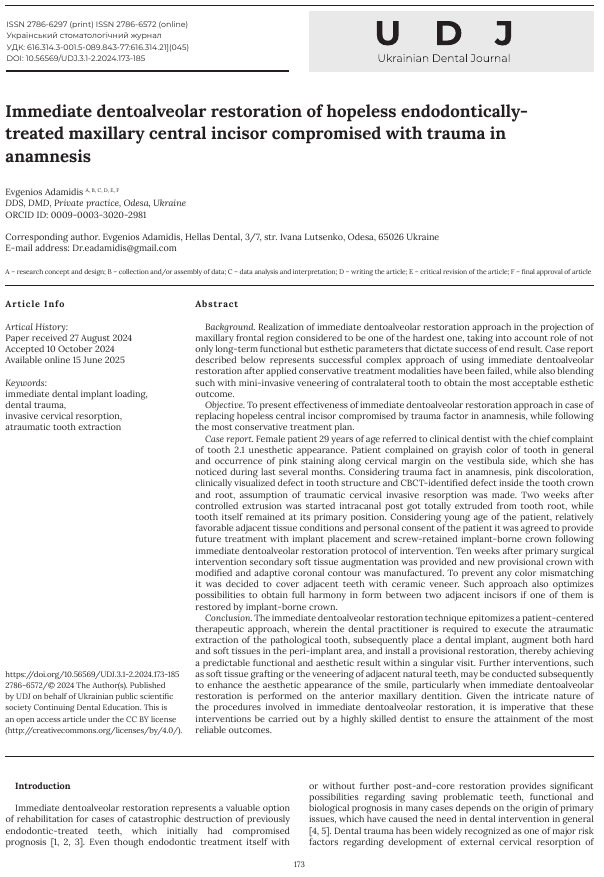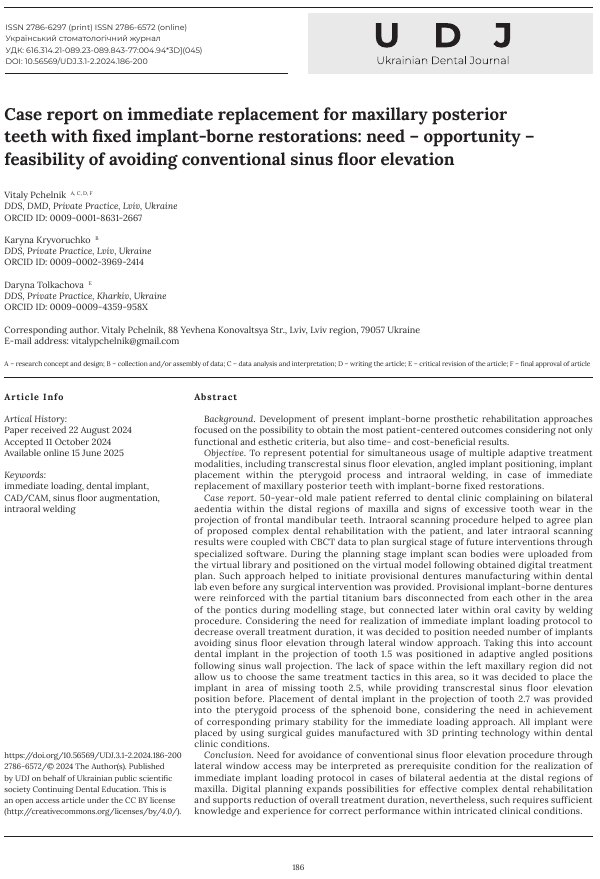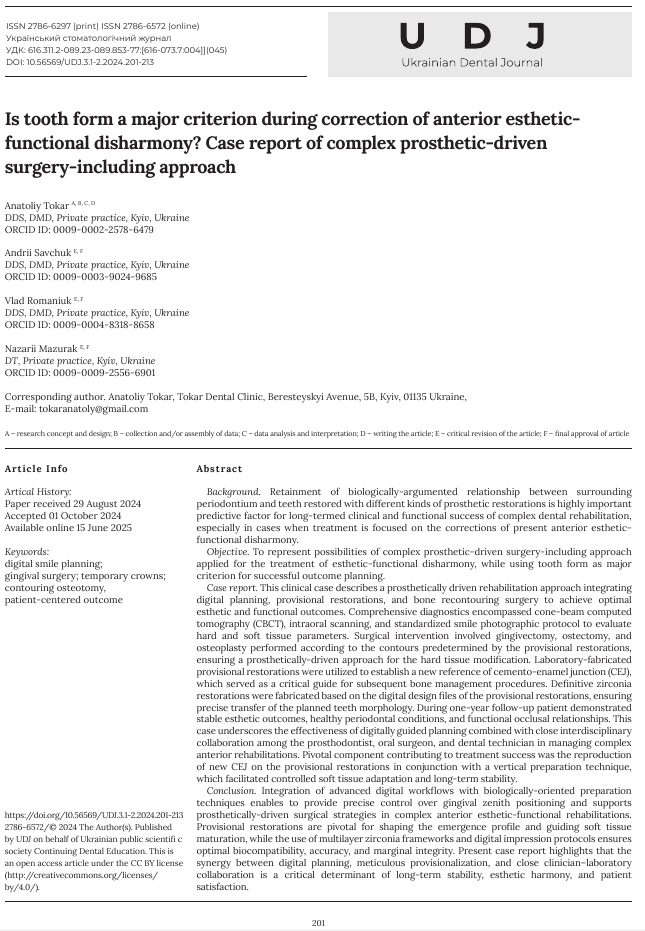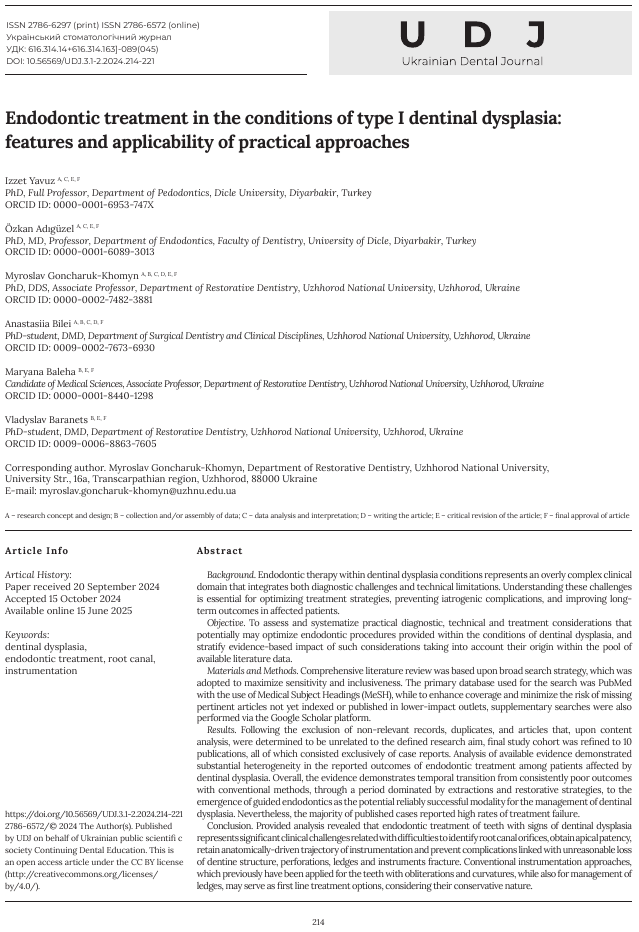Vol. 3 No. 1-2 (2024): Ukrainian Dental Journal
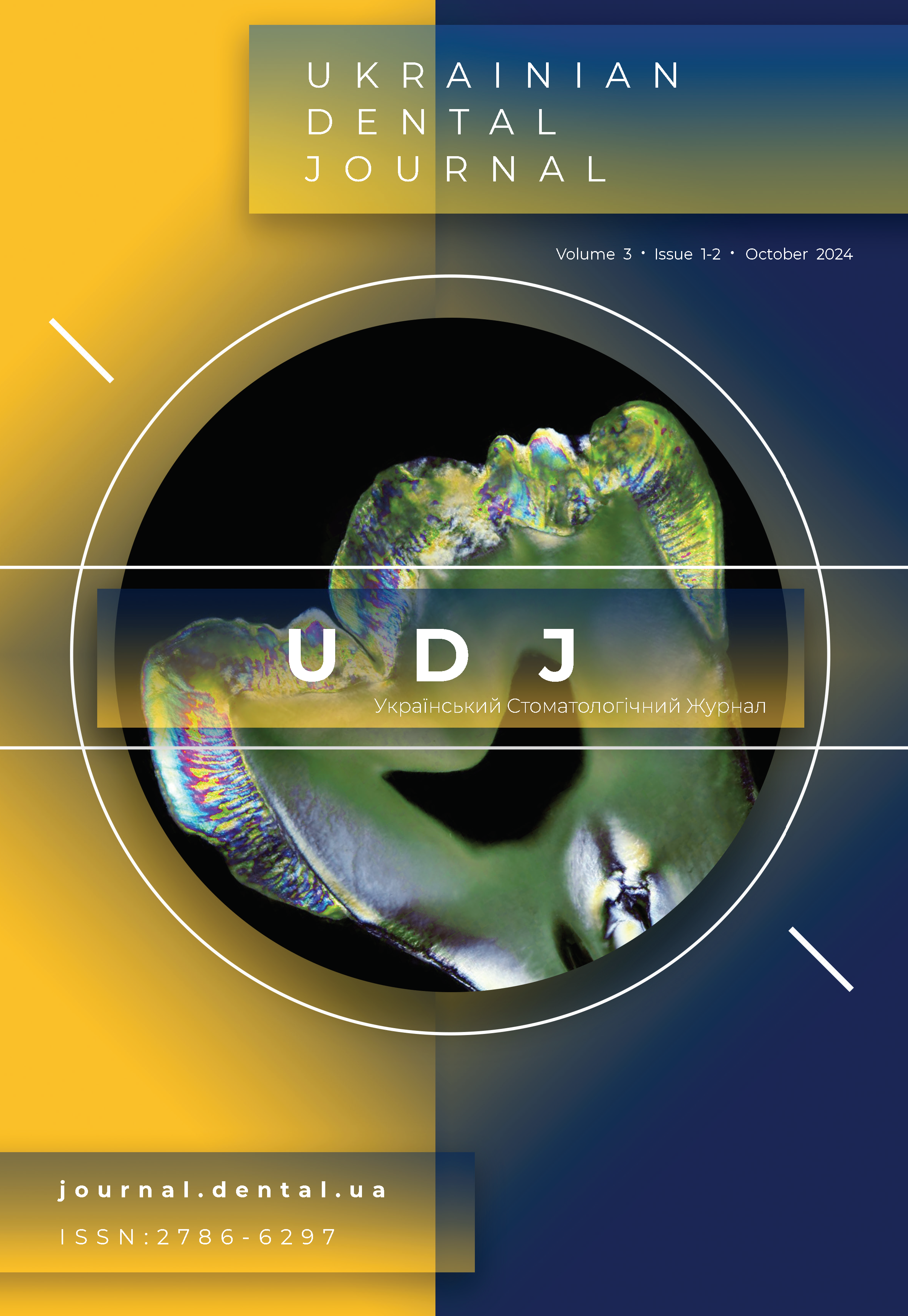
Journal Title: Ukrainian Dental Journal
Title abbreviation: UDJ
DOI: 10.56569/UDJ.3.1-2.2024
UDC: 616.314(477)(05)
This Is The Way: From Clinical Case Representation to Structured Scientific Research
Consistent modification and refinement of concepts within the existing evidence base is an integral part of its development and maturation. However, this process is inherently time-consuming, as it requires comprehensive analysis of the facts and evidence that justify the revision of established views. And, as always, time is limited: during the period needed to reconsider certain approaches, clinical practice being dynamic and evolving environment continues to generate new observations and hypotheses, which will later be tested through structured scientific research. From this arises an important conclusion that should not be overlooked: for clinical dentists, the most straightforward and dynamic format for communication, exchange, and representation remains to be clinical case report. Within this framework, practitioners can present their own proposed modifications to treatment protocols while simultaneously verifying the universality and applicability of generally accepted clinical principles through thoughtful discussion.
The fourth issue of the Ukrainian Dental Journal serves as vivid example of the current national experience in integrating the international evidence base into clinical dental practice by leading Ukrainian specialists. This integration is showcased through clinical case reports, where the systematic nature of the applied treatment approaches and the deep understanding of biological concepts have been key to achieving long-term successful outcomes.
In this issue, readers will find practical insights into the use of partially epithelialized connective tissue grafts for soft-tissue augmentation in peri-implant areas and will have the opportunity to analyze alternative approaches for similar clinical scenarios. Separate publication presents the experience of applying the immediate dentoalveolar restoration technique in a case involving a critically compromised central incisor, previously regarded as one of the greatest aesthetic challenges in dental rehabilitation. Another clinical case in this issue revisits the approach to immediate restoration of distally unrestricted edentulous areas using implant-supported prostheses, while avoiding traumatic interventions in the maxillary sinus region and leveraging the potential of modern digital technologies. Of particular interest to readers will be a clinical case focused on the correction of aesthetic and functional disharmony, based on contemporary concepts of biologically driven rehabilitation and surgical crown lengthening. Within the context of international collaboration, the team of authors has also prepared comprehensive review of the currently available literature, clearly structuring all practically relevant aspects related to endodontic treatment of teeth affected by dentinal dysplasia type I. Uniquely significant contribution of this issue is the presentation of the results of clinical and microbiological studies that support the use of oxygen-releasing agents to optimize conventional treatment protocols for patients with stage III–IV periodontitis. All these diverse topics share a common foundation – they originated from clinical cases. Some are still in the process of data accumulation and analysis, while others already present finalized results.
Therefore, dear readers, we are pleased to present to you the fourth issue of the Ukrainian Dental Journal – journal that can serve as the starting point of your own scientific journey, journal open to collaboration not only with researchers but also with practicing clinicians, and dedicated to showcasing Ukrainian dental experience and scientific achievements at the international level, while aspiring to meet only the highest standards.
The path of personal scientific development is long and challenging – from the presentation of clinical cases to the conduction of structured scientific research, yet this is the way which remains the only correct one for maintaining methodological consistency, advancing scientific knowledge, and ensuring the accurate interpretation of evidence.
Editor-in-Chief, Larysa Dakhno
Associate Editors, Myroslav Goncharuk-Khomyn
